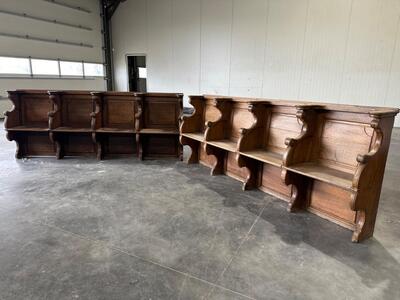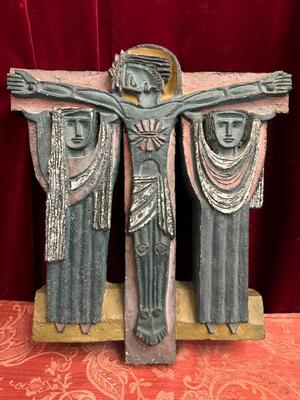|
France
In 1238, Baldwin II, the Latin Emperor of Constantinople, anxious to obtain support for his tottering empire, offered the crown of thorns to Louis IX of France. It was then in the hands of the Venetians as security for a great loan of 13,134 gold pieces, yet it was redeemed and conveyed to Paris where Louis IX built the Sainte-Chapelle, completed in 1248, to receive it. The relic stayed there until the French Revolution, when, after finding a home for a while in the Bibliothèque Nationale, the Concordat of 1801 restored it to the Catholic Church, and it was deposited in the Cathedral of Notre-Dame de Paris.
The exact plant species used to make the crown is not confirmed. The relic that the church received was examined in the nineteenth century, and it appeared to be a twisted circlet of rushes of Juncus balticus, a plant native to maritime areas of northern Britain, the Baltic region, and Scandinavia. The thorns preserved in various other reliquaries appeared to be Ziziphus spina-christi, a plant native to Africa and Southern and Western Asia, and had allegedly been removed from the crown and kept in separate reliquaries since soon after they arrived in France. New reliquaries were provided for the relic, one commissioned by Napoleon Bonaparte, another, in jeweled rock crystal and more suitably Gothic, was made to the designs of Eugène Viollet-le-Duc. In 2001, when the surviving treasures from the Sainte-Chapelle were exhibited at the Louvre, the chaplet was solemnly presented every Friday at Notre-Dame. Pope John Paul II it personally to Sainte-Chapelle during World Youth Day. The relic can be seen only on the first Friday of every month, when it is exhibited for a special veneration Mass, as well as each Friday of Lent (see also Feast of the Crown of Thorns).
Members of the Paris Fire Brigade saved the relic during the Notre-Dame de Paris fire of April 15, 2019.
|


























